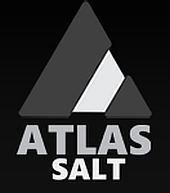 Alabama to release pilot plant results this month
Alabama to release pilot plant results this month
ALABAMA GRAPHITE CORP. PROVIDES CORPORATE UPDATE
Alabama Graphite Corp. has provided the following corporate update on its 100-per-cent-owned flagship Coosa graphite project located in east-central Alabama, United States, and secondary-processed, specialty coated spherical graphite development progress.
A green-energy supply chain company.
Chief executive officer Donald Baxter’s June, 2015, appointment signalled a paradigm shift for the company. Mr. Baxter implemented an entirely new strategic direction, building and advancing AGC as a U.S. green-energy supply chain producer, with a mandate to address the needs of the rapidly expanding American lithium-ion battery industry.
Although Mr. Baxter has served as president and chief operating officer for other graphite development companies in recent years, AGC presented him with the first opportunity to advance a graphite company strategically from the onset, as opposed to repairing or attempting to optimize a business strategy that was already cast.
Few graphite development companies outside of China have the requisite expertise and experience to produce secondary-processed (final) specialty CSPG, specifically engineered for lithium-ion battery use. The board of directors of AGC is confident that Mr. Baxter and his team do. Aside from AGC, Mr. Baxter was instrumental in creating and directing successful spherical graphite programs at two other graphite companies. Last year, Mr. Baxter appointed graphite industry expert George C. Hawley as senior technical adviser and contracted two independent North American laboratories to complete his team of independent graphite processing experts and lithium-ion battery scientists, capable of executing AGC’s new CSPG-focused strategy.
CSPG for lithium-ion batteries
Unfortunately, CSPG is not universally well understood and some misconceptions exist. For instance, there appears to be a misconception that only China has the requisite expertise to produce CSPG. Though there is very little actual CSPG knowledge in the graphite development space (this is why most companies subcontract out CSPG-related work, usually to the Chinese), there is CSPG expertise in both Europe and North America. Further, some claim that because the Chinese CSPG production process yields approximately 30 per cent, it is therefore impossible for a team of North American CSPG experts to achieve better yields. Again, AGC management believes that this view is inaccurate. Mr. Baxter and his team have been working diligently on all aspects of CSPG development for more than a half decade and on numerous types of natural flake graphite. Mr. Baxter — who AGC believes is one of the most experienced graphite mining engineers outside of China — has a considerable amount of CSPG manufacturing expertise and experience in the graphite development space. Additionally, Mr. Baxter and members of his team have visited China multiple times where they observed what they consider to be highly inefficient, compartmentalized CSPG manufacturing processes and techniques.
As the highest-value flake graphite product available, CSPG conservatively and consistently sells for between $7,000 (U.S.) and $12,000 (U.S.) per tonne in recent times (source: Benchmark Mineral Intelligence, 2015). As described in its preliminary economic assessment, AGC’s vertically integrated, comparatively more environmentally friendly (without the use of hydrofluoric acid) CSPG manufacturing plans are expected to allow the company to eventually achieve what it believes — after extensive market research — will be one of the highest known commercial-production CSPG yields at approximately 75 per cent, with one of the lowest estimated costs of production per tonne at $1,555 (U.S.).
The future is green
The U.S. and global green-energy and clean-technology industries are undergoing unprecedented change and widespread adoption. The proliferation of electric vehicles, including Faraday Future’s planned $1-billion EV plant near Las Vegas and Tesla Motors’ $5-billion Gigafactory 1 located outside of Reno — planning to produce 700,000 electric vehicles per year combined — has made the state of Nevada the Western centre of the new-age automobile industry. Nevada’s Governor Brian Sandoval, summarized his state’s support of the electric vehicle industry when he commented, “The world’s changing … we’re not going to let it pass us by.”
However, AGC is devoting its efforts toward securing off-take agreements with several potential clients, as opposed to only one. There are numerous major lithium-ion battery, anode and stationary storage (battery) manufacturers in the United States — and AGC is currently preparing CSPG sample material for a number of potential American end-users (due to non-disclosure agreement requirements, AGC is legally precluded from disclosing the names of entities the company has entered into agreements with). The current total world consumption of natural flake graphite is 400,000 tonnes per annum. Global battery-grade graphite production is currently estimated at 80,000 tonnes per year (60 per cent of which is natural flake graphite; 40 per cent is the more expensive, inferior performing and environmentally damaging synthetic graphite; source: Simon Moores, Benchmark Mineral Intelligence, 2015), but leading independent analysts, such as Benchmark Mineral Intelligence, forecast demand for “battery-ready” graphite will increase more than 213 per cent over the next four years (by 2020), exceeding 250,000 tonnes per annum. Although batteries for transportation represent a significant demand driver for lithium-ion batteries, according to Panasonic Corp., it is the stationary (or grid storage) battery segment which is forecasted to grow exponentially to 2025 with a compound annual growth rate of 74.9 per cent (source: Panasonic Corp., 2015). AGC management is of the opinion that the need to evolve American CSPG processing capacity and supply is now paramount.
As an advancing graphite development company in the United States and with the estimated lowest initial CAPEX requirements of any graphite development company known to AGC management, AGC’s National Instrument 43-101 preliminary economic assessment effective Nov. 27, 2015, entitled “Alabama Graphite Corp.: Coosa graphite project, Alabama, USA,” indicated the company’s potential to become a bottom-quartile-cost producer of CSPG (based on the company’s market research) for use in lithium-ion batteries and a reliable, U.S. supplier of specialty high-purity graphite products. A full copy of the PEA is available at SEDAR.
Note: a preliminary economic assessment is preliminary in nature, it includes inferred mineral resources that are considered too speculative geologically to have economic considerations applied to them that would enable them to be categorized as mineral reserves and there is no certainty that the preliminary economic assessment will be realized.
A made-in-USA solution
AGC management believes that, logistically speaking, the company’s Coosa graphite project is situated in the most advantageous location of any graphite project currently under way on the North American continent. The Coosa project is located on private land (with only Alabama state-level permitting required, as opposed to U.S. federal permitting and EPA approval requirements) in what AGC management believes is an established mining-friendly jurisdiction, with excellent infrastructure, a year-round temperate climate, and early indications of support from stakeholders and the local and state government levels. Being located in Alabama, the project has local access to the American market and AGC management believes that perhaps this could be one of AGC’s most important competitive advantages since the company holds the potential to offer future U.S. clients a made-in-USA solution. This would afford the end-user the associated United States sourcing benefits, as it pertains to the U.S. Federal Trade Commission’s Made in USA labelling act and U.S. materials sourcing claims (source: U.S. Federal Trade Commission, 2014). The fact that the CSPG that AGC is endeavoring to produce would actually be sourced from the United States, as opposed to merely being processed in the U.S. or elsewhere, could offer competitive advantages and a potential security of supply that non-U.S.-sourced graphite may not be able to match.
Maintaining shareholder value in the face of adversity
The hostile capital markets in the junior resource sector continue to present significant challenges for graphite juniors and, as a result, many flake graphite development companies have been reduced to a state of reduced development activity. In addition, to the knowledge of AGC, there are no fully committed offtake or supply agreements in the graphite development space where end-users have agreed to supply the upfront capital to develop the graphite project.
AGC management is of the opinion that conventional flake graphite development companies will likely continue to face challenges because the market for conventional unfinished graphite concentrate outside of China is stagnant. As markets have indicated, there is not a great deal of demand for tens of thousands of more tonnes of primary processed graphite concentrate per annum. AGC management is of the opinion that the conventional business model for flake graphite development companies (intending to produce traditional, run-of-mine graphite concentrate of various flake sizes and purities) has become generally unrealistic and unsupportable for the foreseeable future due to a lack of demand. This is due to a downturn in the steel industry (the primary demand driver for flake graphite concentrate), current oversupply in the market and a fragile global market that may not be able to readily absorb significant amounts of additional supply of unfinished graphite concentrate. Further, AGC management believes that the traditional evaluation parameters/metrics of graphite projects and their associated graphite concentrates are not relevant to those graphite companies with a sole focus on battery technology and other secondary processed graphite. The standard parameters of flake size, head grade, or how many tonnes of run-of-mine graphite concentrate can be produced for the low-value applications that require primary processed graphite are not relevant in today’s high-tech graphite market outside of China. Based on the foregoing, AGC management is of the opinion that finished, specialty CSPG graphite for lithium-ion batteries is the only flake graphite application where there will be a significant, enduring future demand.
A year of positive change and rapid advancement.
Without question, 2015 proved to be an exciting year for AGC, during which time the company accomplished several mission-critical operational and technical goals and objectives, including, but not limited to:
- Coosa graphite project’s expanded 2015 diamond drill program;
- Coosa graphite project’s 200-ton bulk sample extraction and preparation;
- Commencement of AGC’s specialty battery-ready graphite development work for use in lithium-ion batteries;
- The appointment of leading graphite industry expert, George C. Hawley, as senior technical adviser and chairman of the company’s technical advisory board;
- Construction and commissioning of the Coosa graphite project 200-ton pilot plant by Oliver Peters at SGS Mineral Services;
- Updated Coosa graphite project NI 43-101 mineral resource estimate by Metal Mining Consultants Inc.;
- Achieving 99.99 per cent Cg purity across all flake sizes (exceeding the 99.95-per-cent Cg threshold for battery-grade graphite) via AGC’s proprietary low-temperature thermal purification process;
- Successful completion of a PEA — by independent engineering firm AGP Mining Consultants Inc. — which indicates a potentially low-cost project with potentially positive economics.
AGC has materially advanced the development of the Coosa graphite project and has enhanced the company’s prospects in the American market for superior-quality, high performance specialty graphite products.
Mr. Baxter commented: “While we are committed to the successful optimization of the commercial potential of our high-quality battery-ready specialty graphite business strategy, our true purpose is to build an enduring world-class U.S. supply-chain company to address the American green-energy industry, with a mission of supporting the lithium-ion battery industry. We are confident that by remaining focused on this mission, we will prevail in executing our long-range growth strategies, intending to significantly increase value for our shareholders.
“I am extremely proud of our purpose-driven, innovative and hard-working company; the dozen-plus talented and dedicated experts and professionals who comprise our team, and the strategic insights we have developed over the past five years in CSPG-related work,” said Mr. Baxter. “In the past six months, I believe that we have done more to successfully advance and derisk AGC than had been completed in the previous 2.5 years. Moreover, I am enthusiastic about the promising future that lies ahead for AGC and, more specifically, the important milestones we remain on track to achieve in the coming year.”
Why AGC is not in the graphene business.
Graphite and graphene are both allotropes of carbon. However, that is where the similarities between the two materials begin and end. One is a historically utilized industrial mineral (graphite) and the other is a recently discovered, cutting-edge advanced nanomaterial (graphene) that the world’s top materials scientists are still researching in order to better understand. Although there are significant moneys being invested in graphene research and development around the world, those leading graphene’s commercialization are household names, such as Intel, IBM, Xerox, BASF, 3M, Philips, Dow Chemical, DuPont, Samsung and Nokia, in addition to the University of Manchester’s National Graphene Institute (the world’s leading graphene research institute) (source: U.S. Department of Energy’s Oak Ridge National Laboratory, 2015).
AGC management believes that until there is a major graphene-based commercial application which calls for significant amounts of graphene supply, graphene will generally remain at the gram level in research and development laboratories and universities.
Additionally, the global market for graphene sales was estimated to be a mere $12-million (U.S.) in 2014 (source: Graphenea, 2015), while the global lithium-ion battery market is conservatively valued in the tens of billions of dollars (source: Taiyou Research, 2014).
In determining AGC’s new corporate strategy, it was decided that AGC would not be continuing with further graphene development-related work. AGC wishes to address a tangible, rapidly expanding multibillion-dollar market with a saleable, in-demand product, as opposed to a nascent, research-based approximately $12-million nanomaterials market, that has yet to develop a significant commercially viable application.
Upcoming milestones
AGC expects to release the results for its Coosa graphite project pilot plant in January, 2016. As mentioned previously, the key parameters are quite different when evaluating a developing battery materials and technology company versus a conventional flake graphite development company. For a battery materials and technology focused graphite company, the pilot plant results should demonstrate the carbon grade that may be achieved for primary processing. As such, the primary metric of concern is concentrate grade — across all flake sizes — with emphasis on fine flakes. One hundred per cent of AGC’s primary-processed graphite is expected to be diverted to secondary processing for purification, micronization, spheronization and carbon coating, to produce finalized CSPG. The AGC pilot plant is expected to provide a significant amount of feedstock material — multiple tons — to facilitate the entirety of the company’s CSPG development work.
Additionally, the company will be releasing independent preliminary test results for AGC’s lithium-ion batteries, detailing reversible capacity, irreversible capacity loss, particle distribution, loss on ignition, tap density, BET (Brunauer-Emmett-Teller) surface area analysis and Galvanostatic cycling data. The company looks forward to releasing these results shortly.
Following the next round of financing that AGC expects to pursue, AGC intends to commence with the feasibility study for the Coosa graphite project. The feasibility study is expected to include a pilot plant for the company’s proprietary CSPG production process, which the company is currently optimizing to increase the quantities of CSPG material produced to kilograms, as potential end-users are requesting multiple-kilogram quantities to evaluate.
Conclusion
Mr. Baxter stated: “I’d like to give thanks to my fellow AGC shareholders. We recognize that through your investment in our company, you are expressing confidence in our ability to build AGC into a world-class American green-energy supply chain producer. Your commitment creates trust, and that trust unites us all: you, our shareholders; our employees; our stakeholders; and, above all, the countless people who will ultimately benefit from our success. You can rest assured knowing that we take this responsibility to heart and will be relentless in our efforts to deliver. AGC is led by a team of seasoned professionals who know this business and what it takes to succeed.”
Qualified person
Donald K. D. Baxter, PEng, president, chief executive officer and executive director, is a qualified person as defined by NI 43-101 guidelines, and has reviewed and approved the content of this news release.
http://alabamagraphite.com/new-releases/
































